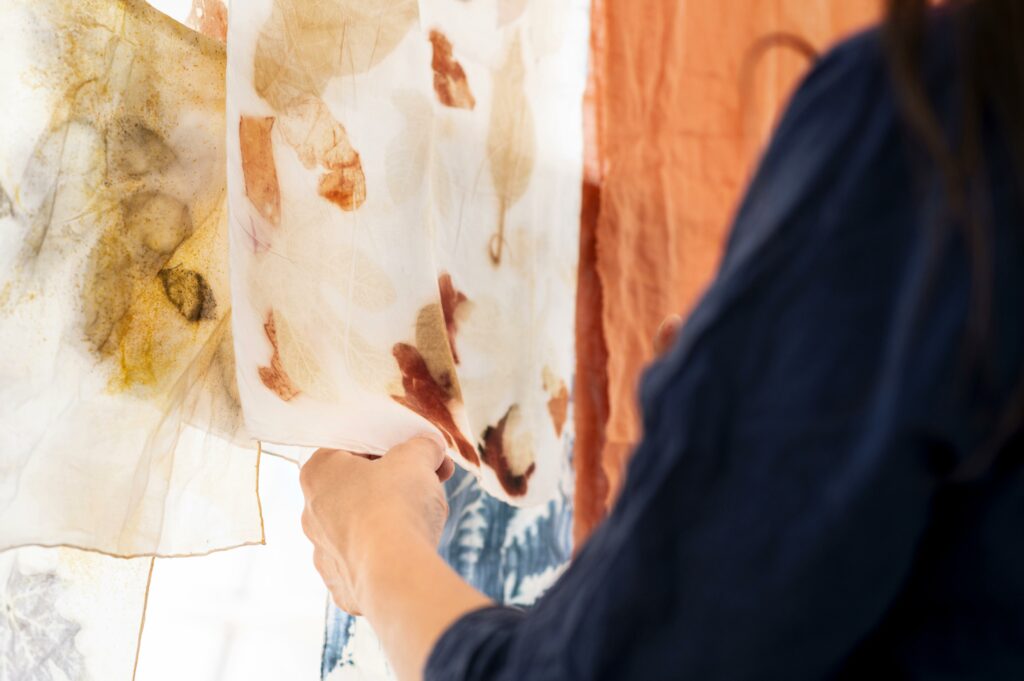Summary:
- Textile processing enhances the quality of fabrics;
- It consists of three parts. After completing these steps, the materials begin to offer greater value;
- Technology can help your business with textile processing and many other production stages. Get the free trial of Audaces360 multi-solution and undercover the benefits!

Textile processing – are you familiar with this concept?
It is a process in the textile industry that involves transforming raw materials into threads to create fabrics and garments.
Until the yarn becomes fabric, it goes through some processes often complex, but essential to ensure the final product is of high quality and attractive to customers.
In this article, you’ll learn about the importance of textile processing and how it can be effectively employed in the fashion industry.
Sumário
Read on to find out more!
What is textile processing?
Textile processing is an activity that seeks to enhance the quality of fabrics used in the textile industry.
This activity, which was once done manually, has evolved significantly and is now fully automated.
Thus, it is possible to guarantee greater precision and superior quality of treated fabrics.
Textile processing is divided into three stages: primary, secondary, and tertiary. Each stage produces distinct, yet equally important results.
This process can only be done post-weaving and employs the use of chemical agents such as acids, alkalis, salts, oxidants, and reducers. Such products act as pH regulators and serve to fix treatments, in addition to helping in the improvement of fabric characteristics.
Learn more: How digital fashion design works and what are the benefits for the clothing industry
What is the purpose of textile processing?

Textile processing has specific objectives for each step of the process. The following are some of the main ones:
Removing fibers from the textile substrate by singeing
Substrates remain on top of the fabric or yarn, giving it a rough or uneven texture. This can even affect the regularity of the prints.
When eliminated, these substrates give the material a better appearance, mainly visually. This leaves a softer touch and adds shine to the pieces.
Learn more: Textile fibers: everything you need to know about the subject
Trimming fluff
The textile substrate removal process is employed on synthetic fabrics, blended fabrics, and furry textiles.
Its purpose is to shear off the protruding fibers from the material, which is usually accomplished by running the fabric through a set of razor blades. This friction causes the hairs to be cut, resulting in a smooth, finished surface.
Learn more: 4 top tips for a successful fashion collection launch
Remove gums added to fabrics
To make fabrics more resistant and hard-wearing, ironing treatments are applied, which minimizes the possibility of fabric ripping during fabrication.
However, for the fabric to become more malleable during use, it must undergo the gum removal process.
Learn more: What is virtual fashion design and why use it in your clothing business?
Make fabric whiter
When the fabric has a white background or needs a bright color, it must go through the bleaching process and then undergo dyeing, to achieve a vivid, vibrant color.
Thus, the lighter the substrate is, the more vibrant it will be, resulting in a fabric with a stunning, eye-catching hue.
Learn more: Industry 4.0: Everything you need to know about the future of apparel
What are the stages of textile processing?
To successfully process textiles, manufacturers must understand the distinct phases that constitute them.
Familiarize yourself with the necessary steps for your business to successfully complete the textile processing:
Primary processing
In the first stage of textile processing, the materials are prepared to ensure they are in an optimal state to proceed to subsequent stages.
It is here that the fabrics are washed and boiled. This step is intended to promote the cleaning of the fabric, in addition to designing it. Thus, it is possible to exclude and eliminate the oils and other additives applied during the weaving stage.
Primary processing encompasses the following activities: brushing, shearing, razoring, scorching, bleaching, and some others.
Following this phase, the fabric is ready for dyeing.
Secondary processing
After the preparation step, secondary processing is the next step.
During this stage, fabrics are dyed in a uniform manner using a variety of techniques such as reactive dyeing and dry pigments.
In addition to dyeing, printing can also be applied, inserting patterns onto the fabric.
Tertiary processing
The final step is tertiary processing.
Here, the fabric is given a more noble effect, enhancing its appearance and quality. This happens through physical and chemical procedures.
The method can be temporary or permanent, bringing results such as the increased tactile softness of the piece and more shine.
Moreover, this stage can be used to create simulated textures, marbling, splashes, and other decorative effects on the fabric.
How does textile processing add value to the product?

For the fashion industry to remain vigorous, it is necessary to always be in search of alternatives that boost the success of collections.
For this reason, clothing companies generally opt for differentiated finishes and washes, adding more personality, style, and elegance to their creations.
The pieces that undergo textile processing gain a more noble look both in terms of quality and appearance, arousing greater interest among shoppers.
Consequently, this is a very valuable process for fashion companies, as it contributes to driving sales, and improving business revenue and brand recognition.
Learn more: Find out how technology has been applied in the industrial sector
What are the advantages of automating textile processing?
The automation of textile processing can yield many gains for the fashion industry.
From it, you can control the temperature, and observe production problems much more quickly, in addition to saving resources such as water, chemical preservatives, and more.
Ultimately, these benefits save money and time, providing more effective work management. How can Audaces help your manufacturing company in textile processing?
How can Audaces help your manufacturing company in textile processing?

For companies in the fashion industry looking to automate textile processing, technology can be a powerful ally in reducing costs and significantly boosting productivity.
Audaces offers comprehensive solutions for your business to get the best results!
Audaces360
Audaces360 is a multi-solution that integrates the creative and productive stages of your production.
With Audaces360, you have a perfect solution to overcome the main challenges in the fashion industry, ensuring success from the beginning of your collection.
Audaces technology increases the performance of your garments, providing more practicality, time optimization, and efficiency in delivery.
Conclusion
For the fabrics you create to stand out in the eyes of your customers, they must undergo textile processing. The process is divided into three stages, each with its own unique benefit to the final product.
They aim to make the fabric softer and suitable for use, in addition to removing any fuzz or other blemishes which may be present on natural fabrics, such as leather.
Download our free e-book and learn how to deal with the main fabric types in the industry:
FAQ
It is a process through which the fabric undergoes after weaving to improve the visual aspect and the feel of the material, in addition to receiving effects or prints.
Textile processing consists of three stages: primary, secondary, and tertiary.
Temperature control, efficiency in identifying production problems, and reduced use of resources such as water and chemical preservatives.










